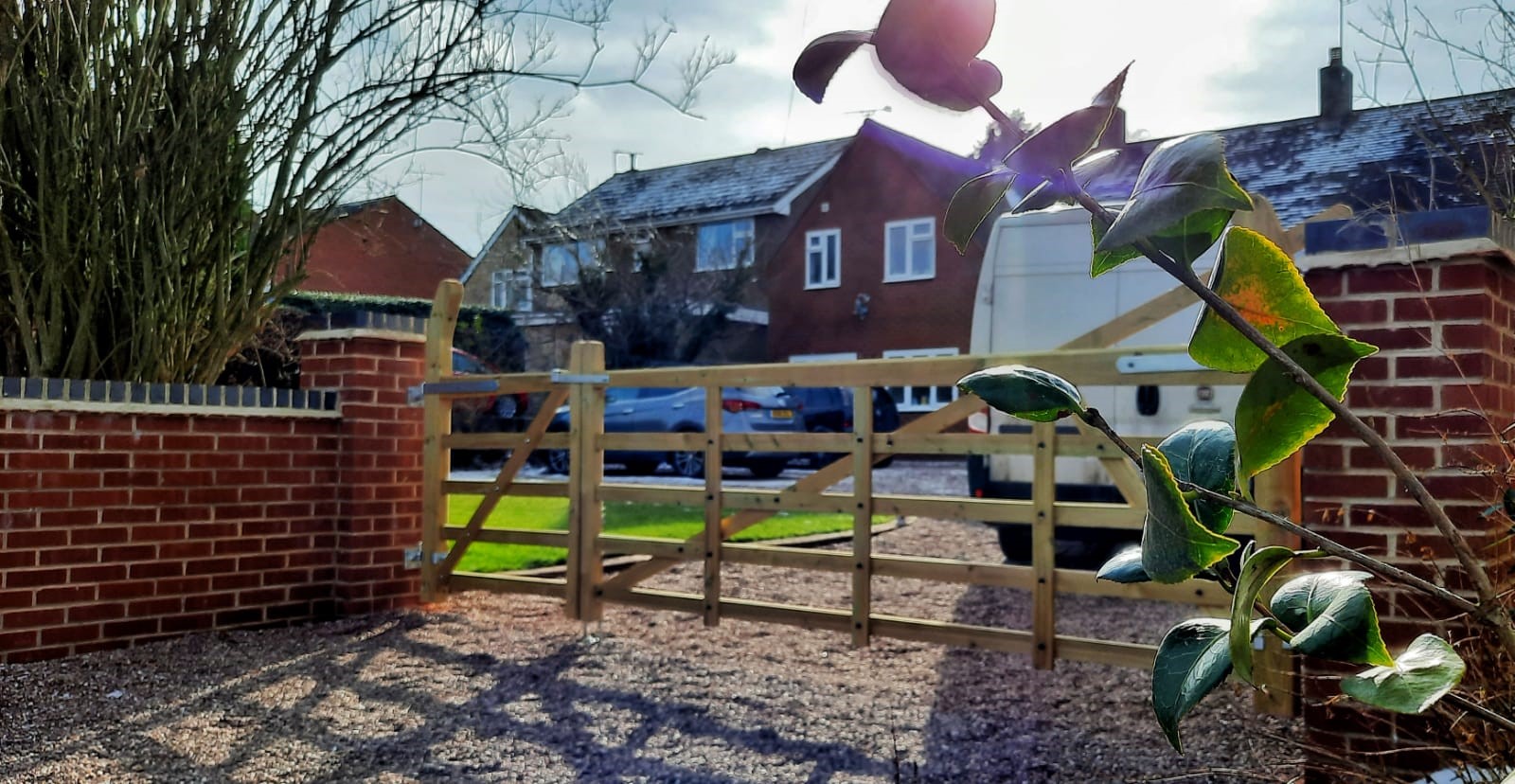Does Your Wooden Gate Need Replacing or Just Repairing? Here's the Expert's Checklist
- Gates
- Railings
- Fencing
- Accessories
& Fitting- Sheds
& Storage- Garden Structures
- Design
& StyleMetal Gates & Railings- Info
& HelpIn our experience here at Garden Gates Direct, wooden gates deteriorate gradually… especially compared to others and that fact alone makes the repair-versus-replace decision more difficult than it needs to be. A gate that appears beyond salvation may simply need simple repairs. Others that still look fine are actually falling apart beneath the surface.
It's a decision that matters. Replace too early, and money gets wasted; wait too long, and you are basically putting cash down on repairs that will not last six months. November makes it particularly urgent: whatever condition your gate's in now, it's going to worsen dramatically through winter.
Below we’ve combined our experience in the industry to give you some guidance on Wooden Gates… with that age old question – should you replace or repair?

Start with structure, not appearance
Forget for now how the gate looks. Paint can disguise major problems. Similarly, gates that look awful might only need cleaning and a new finish.
Press firmly along every frame member and rail. Sound timber feels solid throughout. Soft spots mean rot has started inside. These areas won't carry weight properly regardless of what you do to the surface.
Check splits carefully. Minor surface cracks from weathering don't matter much. Deep splits running through the timber thickness compromise strength significantly. Splits near joints are particularly problematic.
Check the corner joints. Small ones may close as a result of seasonal changes in moisture, but those through which you can see daylight mean permanent joint failure.
.jpg)
Posts Tell the Real Story
Push hard near the top of each post. Any movement at all indicates foundation problems or rot at the base. Posts should feel absolutely rock solid.
Probe post bases with a screwdriver where timber meets ground level. Rotten wood feels soft, and the blade penetrates easily. Base rot in posts usually means replacement – there's no cheap way to repair this properly.
Check concrete around posts. Gaps between concrete and timber allow water to seep in. Frost works in these gaps, loosening everything up gradually. Tap the concrete – loose sections sound hollow.
Hinges and Hardware Reality
Where gates are overloaded or badly installed, timber around hinge fixings is the first to fail.
Cracks radiating from screw holes indicate building stress damage. Enlarged holes mean fixings have worked loose repeatedly; the timber has been compromised and will no longer hold screws reliably.
Rust staining around hinges? That's moisture trapped at metal-timber junctions. The staining itself doesn't matter – it's what's happening underneath that counts.
Test each hinge for excessive play. Work out whether the movement is in the hinge itself or between hinge and timber. Makes a big difference as to whether you're replacing hinges or rebuilding mounting points.
Surface Condition – What Actually Matters
Surface weathering - greying, roughness, minor checking - is manageable through cleaning and refinishing. The timber underneath remains sound.
Press on all surfaces for soft spots. Small, isolated rot patches can be cut out and filled. Widespread softness means the rot has penetrated deep. You're probably looking at replacement territory.
The bottom rails and horizontal surfaces collect water. These deteriorate first. End grain at cut timber ends absorbs moisture fastest.
Peeling paint generally indicates moisture trapped beneath coatings. Simply recoating over failing paint seldom works for any extended period of time. Proper jobs require stripping back to sound substrate.
How Gates Actually Work
Open and close through the full range. Smooth operation means proper alignment and working hardware. Binding or sticking reveals problems.
Where is the binding occurring? Gates catching at specific points may simply need adjustment. Binding along the entire swing suggests some serious problems – warping, post movement, foundation settlement.
Close the gate and glance at gaps around the perimeter. Consistent gaps mean it is correctly hung; uneven gaps mean something has fallen or shifted.
Check for latch engagement. Misalignment shows movement somewhere in the system. Diagnosis tells you if you are adjusting, repairing, or replacing.

The Economics Aren't Complicated
Refinishing the surface - cleaning, treating, recoating - is labour and material intensive, but with no structural work involved. Usually economical for gates otherwise sound.
Joint repair and reinforcement costs more. Whether that makes sense depends on overall condition and how long the gate will last afterwards.
Component replacement - new rails, additional bracing, rebuilt sections – approaches replacement cost quickly. At this point you need to question whether repair delivers value.
This is often more expensive than gate replacement. It seldom makes economic sense to replace posts and rehang existing gates unless the gates have a particular value.
What actually happens is that gates needing extensive repair now will be needing more work shortly. Multiple repair cycles generally cost more than single replacement. Factor that in.
Making the Call
Replace when:
- More than about a third of timber is affected by structural rot.
- Posts exhibit root rot or severe settling
- You're replacing more than one component at a time.
- Repair costs exceed approximately 60% of replacement cost
- The gate has already been repaired extensively
Repair when:
- Structure remains fundamentally sound
- Problems are primarily cosmetic
- You can address each individual component directly
- The gates are of historical importance or architectural significance for their period.
- Repair costs remain well below half of the cost of replacement
Period properties often justify repair costs that pure economics wouldn't support. It is more important to retain appropriate gates than to save a few hundred pounds.
Think about property plans, too. Selling soon? Minimal investment makes sense. Long-term ownership justifies spending more to get gates right.
November Timing
These gates assessed now face winter immediately. Marginal cases often tip toward replacement rather than risking mid-winter failure.
Repairs must be completed prior to December. Surface treatments require appropriate curing time. Structural repairs take setting periods. Weather windows matter.
Planning replacement for next year? Minimal repairs now might get you through winter. That bridging strategy works when the replacement timing suits other factors better than immediate action.
If you’re looking for quality wooden gates, be sure to check out our range. If you’re unsure on next steps, get in touch with us and we’ll look to guide you accordingly.
- Railings




